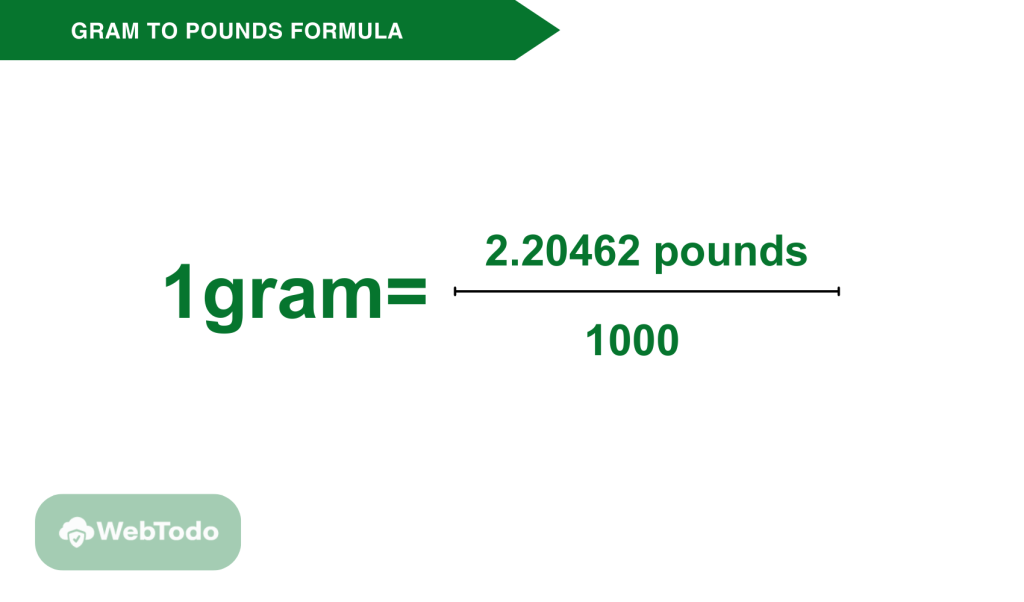In the vast world of measurements, the conversion between grams and pounds stands out as one of the most frequently encountered. This is especially true for those involved in cooking, fitness, and shipping. Whether you’re a culinary enthusiast experimenting with international recipes, a fitness buff monitoring your weight, or someone involved in global commerce, understanding this conversion is pivotal. In this article, we’ll not only convert 800 grams to pounds but also delve into the rich history, significance, and practical applications of these units of measurement.
The Basics of Measurement
Before diving into the specifics of converting 800 grams to pounds, it’s crucial to grasp the foundational concepts of each unit.
- Gram (g): The gram is a metric unit of mass. It represents one-thousandth of a kilogram, which is the base unit of mass in the International System of Units (SI).
- Pound (lb): The pound is both an imperial and US customary unit of weight. Historically defined as 7,000 grains, the modern-day pound is officially pegged at exactly 0.45359237 kilograms.
The formula to convert grams (g) to pounds (lb) is:

pounds (lb)=grams (g)×0.00220462
Where:
- (0.00220462) is the conversion factor from grams to pounds.
- 1 gram is approximately equal to (0.00220462) pounds.
So, to convert a weight from grams to pounds, you multiply the weight in grams by (0.00220462).
The Conversion Factor
800 grams to pounds calculation.
The key to converting between grams and pounds lies in the conversion factor, which stems from the relationship between kilograms and pounds. Given that 1 kilogram equals 2.20462 pounds:
1 gram = 2.20462 pounds 1000 = 0.00220462 pounds
Using this conversion factor, the math for 800 grams to pounds becomes:
800 grams × 0.00220462 = 1.7637 pounds
Thus, 800 grams is approximately equivalent to 1.7637 pounds.
The Importance of this Conversion
- Culinary Arts: With globalization, culinary enthusiasts now have access to recipes from all corners of the world. While European recipes might specify ingredients in grams, American ones often use pounds and ounces. A clear understanding of these conversions ensures that dishes turn out as intended.
- Fitness and Health: Weight scales around the world might display weight in either grams or pounds. For those tracking their weight, especially across different countries, mastering this conversion is essential for consistency.
- Global Commerce: Weight restrictions in shipping, especially for international parcels, might be given in either grams or pounds. Knowing the conversion can prevent unexpected shipping fees or package returns.
Diving into History: Grams and Pounds
The gram is a child of the metric system, birthed in France during the revolutionary era of the late 18th century. The term “gram” finds its roots in the Late Latin word “gramma,” signifying a small weight. As the metric system gained global traction, the gram was universally recognized in many countries.
The pound boasts of a more ancient lineage, having been in use in various incarnations for millennia. The term “pound” is derived from the Latin “pondo,” translating to “weight.” Over the ages, the definition of the pound has undergone several revisions, with its current avatar being based on the kilogram.
Practical Tips for Seamless Conversion
- Mnemonic Devices: Remembering “2.2 pounds for a kilo sounds about right” can be a handy way to recall that a kilogram is roughly equivalent to 2.2 pounds.
- Digital Aids: The digital age offers a plethora of online converters and mobile applications that can instantly provide conversions between grams and pounds. Keeping a reliable website bookmarked or a reputable app installed can be a game-changer.
- Regular Practice: Familiarity breeds ease. The more you engage with these conversions, the more intuitive they become. Challenge yourself to occasionally perform these conversions manually. Over time, you’ll find that you can make near-accurate estimations even without digital assistance.
- Reference Charts: Consider creating a reference chart or flashcards with common conversions. Having a visual aid can accelerate the learning process and serve as a quick reference during tasks.
Beyond the Numbers: Cultural Implications
The way we measure and perceive weight has profound cultural and historical implications. For instance, the US’s adherence to the imperial system, while much of the world uses the metric system, is a testament to the country’s unique historical trajectory and its desire to maintain certain traditions.
Similarly, the global acceptance of the metric system reflects humanity’s need for standardization, especially in an increasingly interconnected world. As commerce, travel, and communication transcend borders, having standardized units of measurement becomes paramount.
Conclusion
The journey from 800 grams to its pound equivalent is not just a mathematical exercise but a dive into the intricacies of history, culture, and practicality. While 800 grams translates to about 1.7637 pounds, the broader narrative underscores the importance of understanding and appreciating the diverse ways in which we quantify the world around us. With the tools, tips, and insights provided in this guide, you’re now well-equipped to navigate the world of weight conversions with confidence and ease.
Related Search Queries
grams to pounds
grams to pounds conversion
grams to pounds calculator
grams to pounds conversion formula
grams to pounds convert
grams to pounds weight
grams to pounds formula
grams to pounds conversion factor
